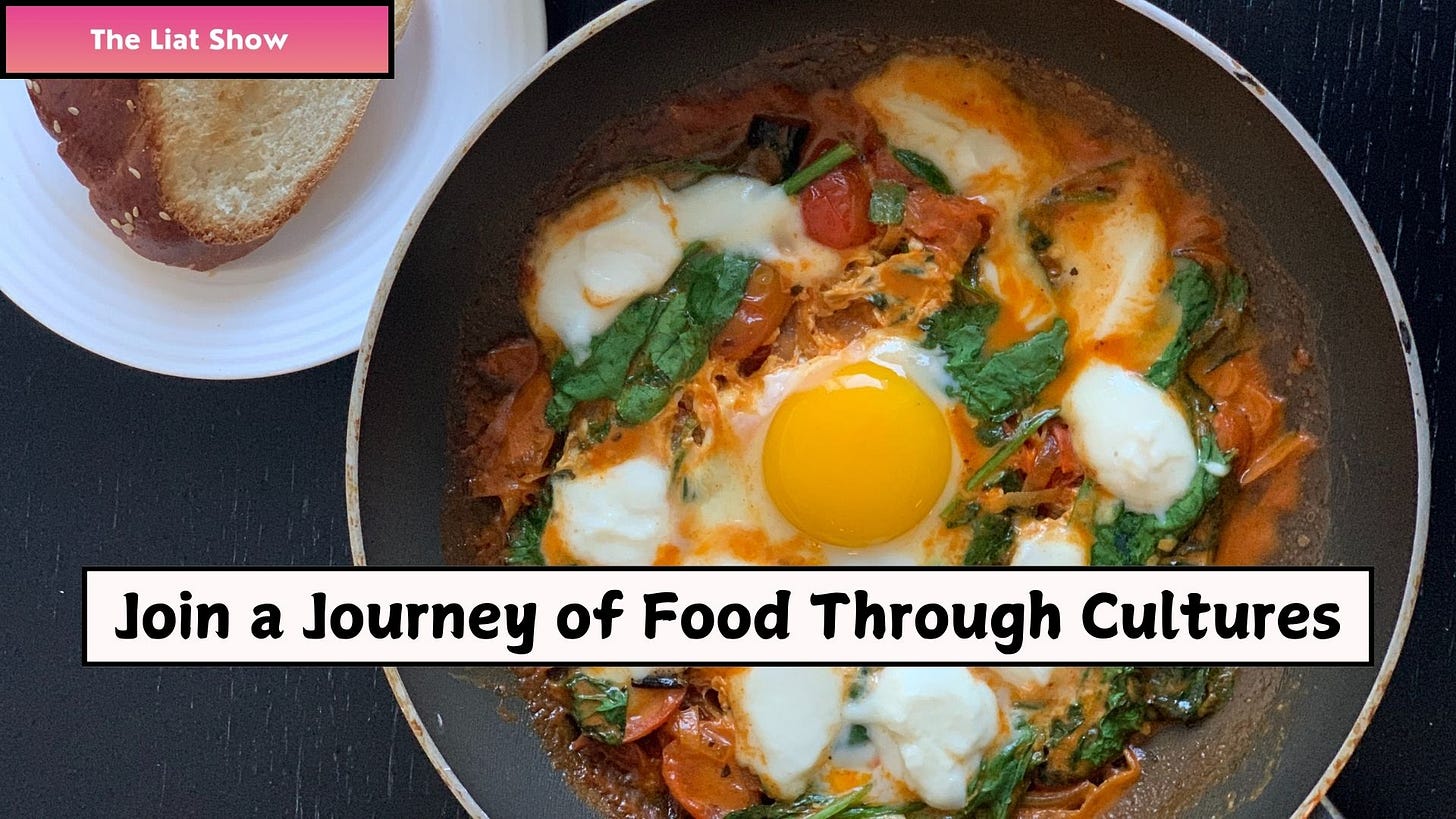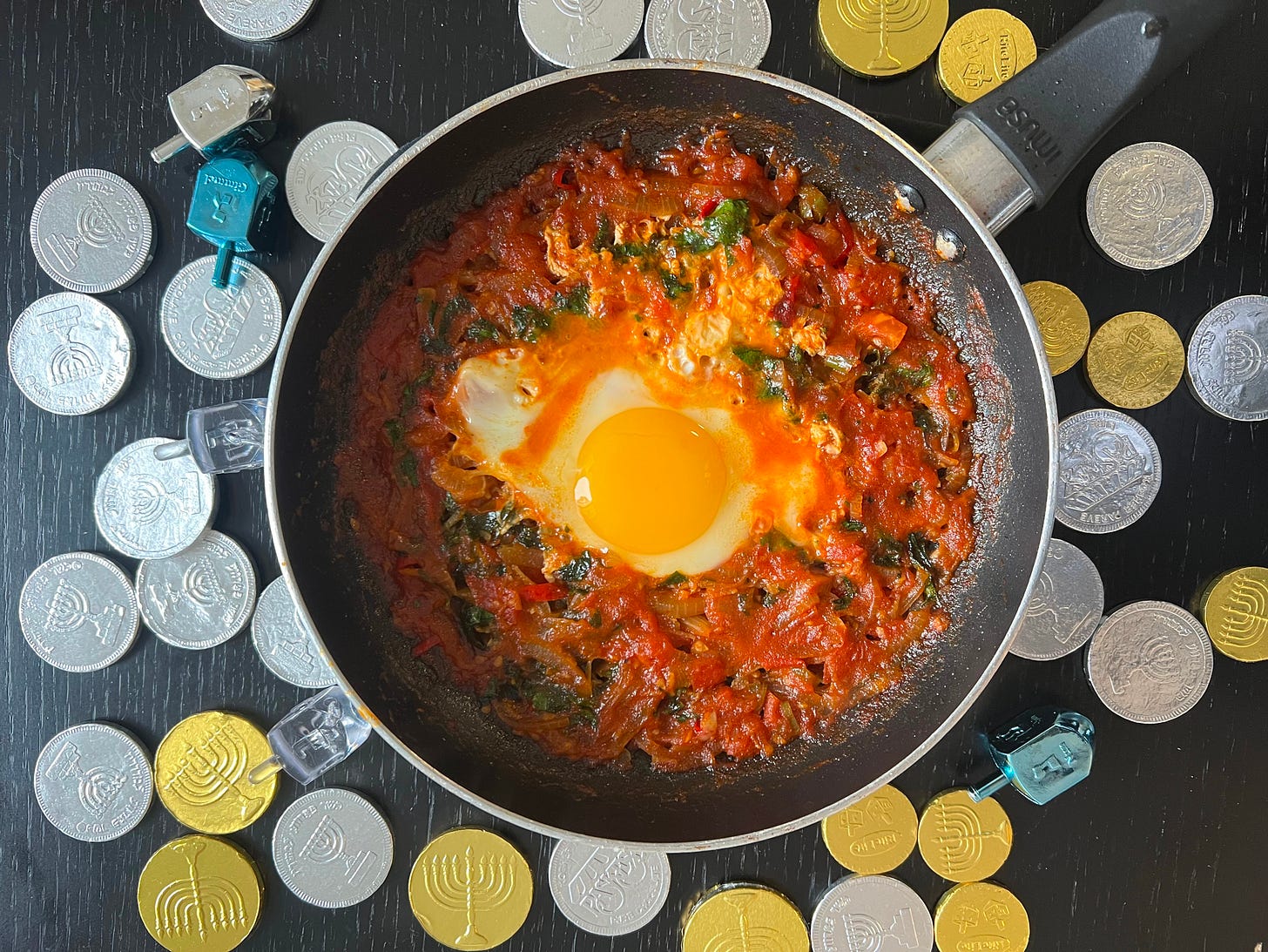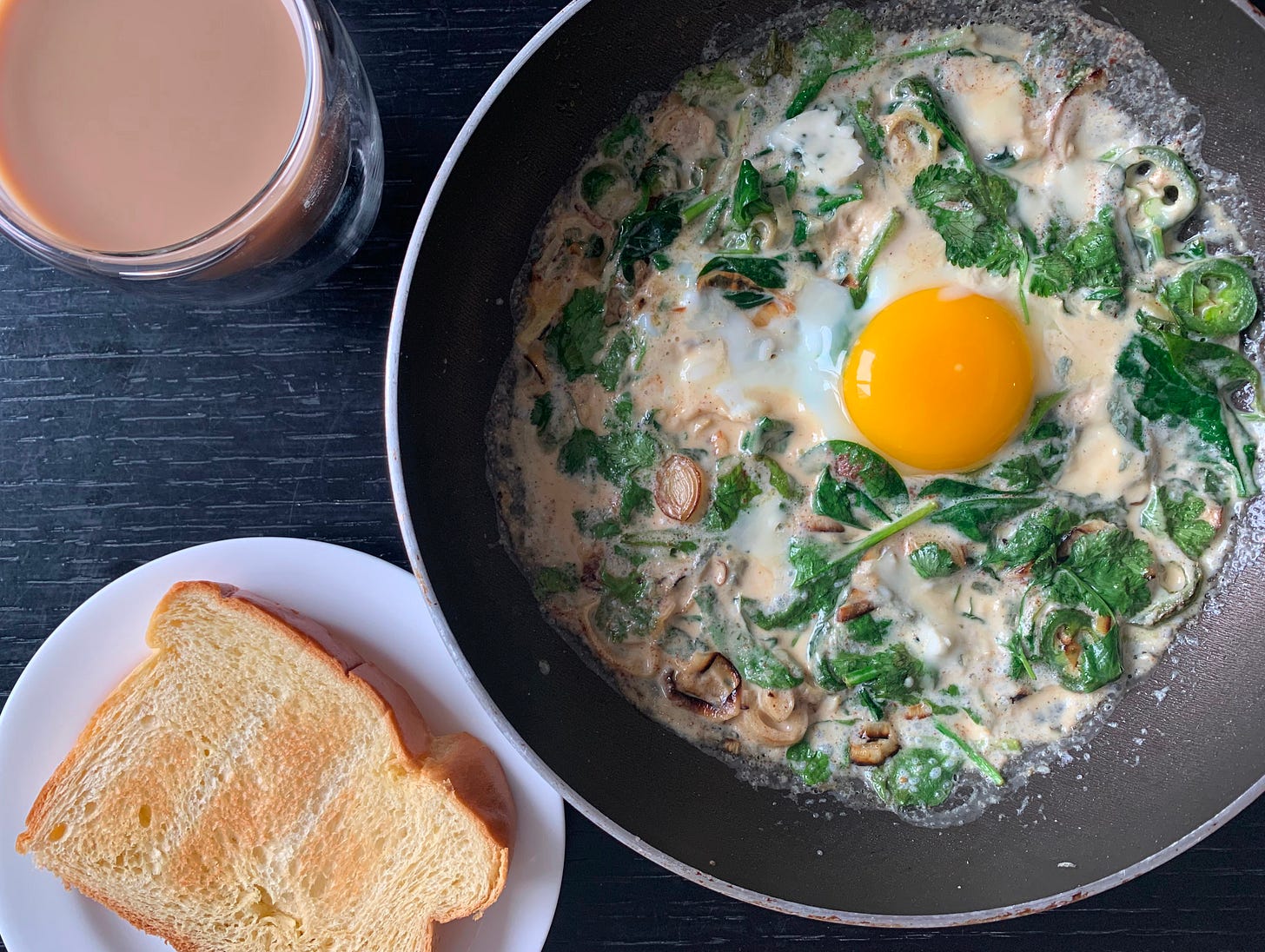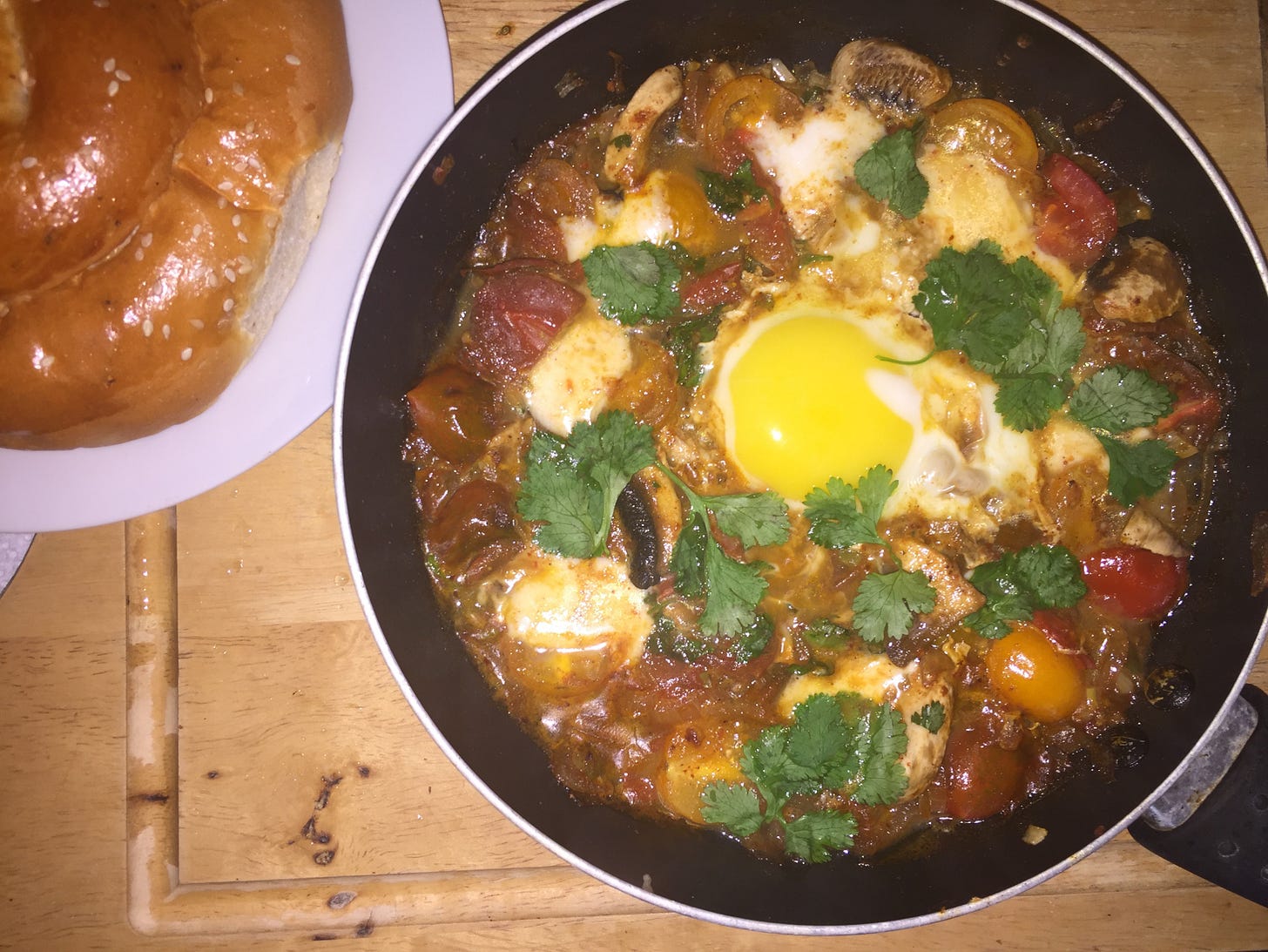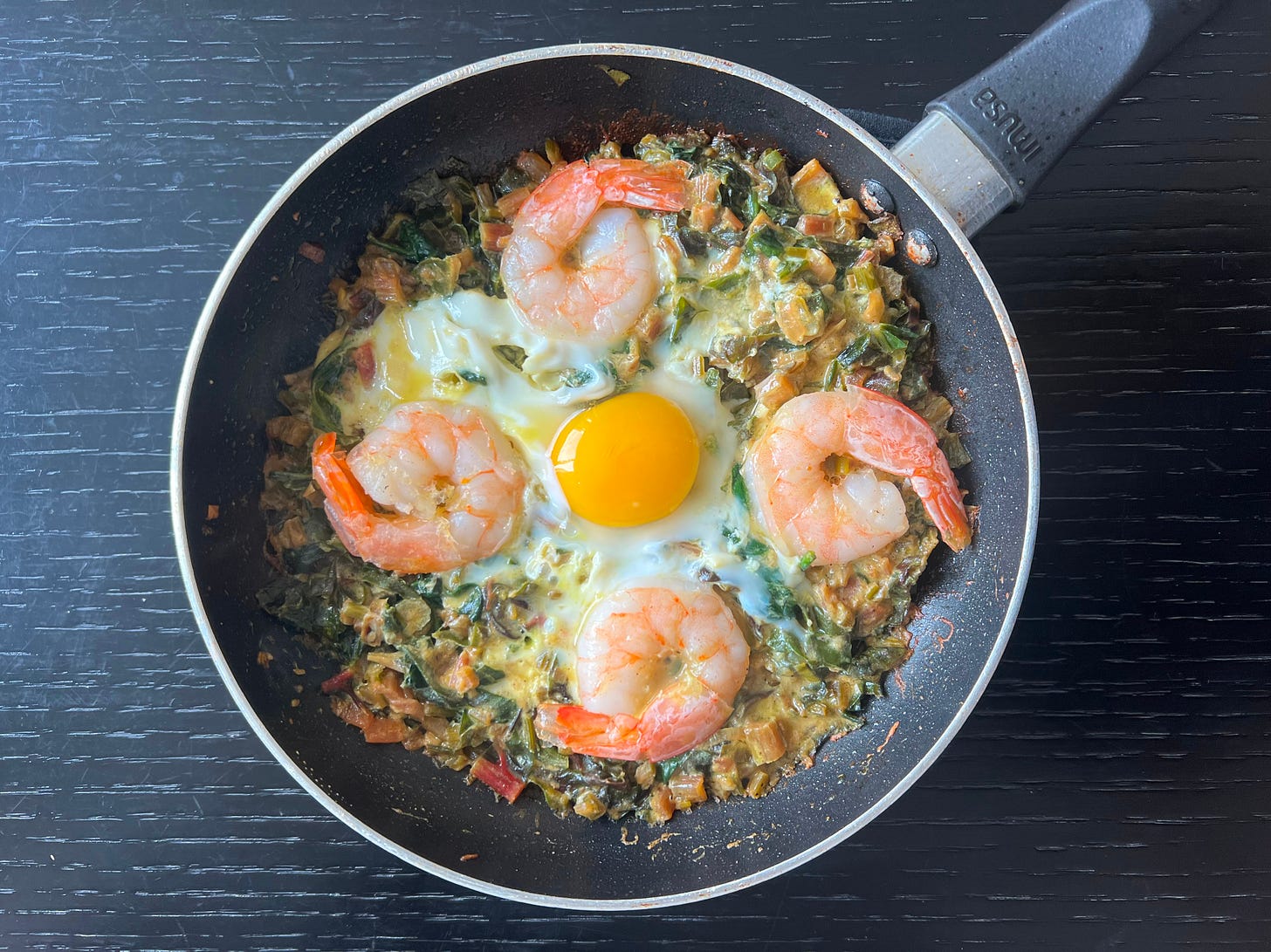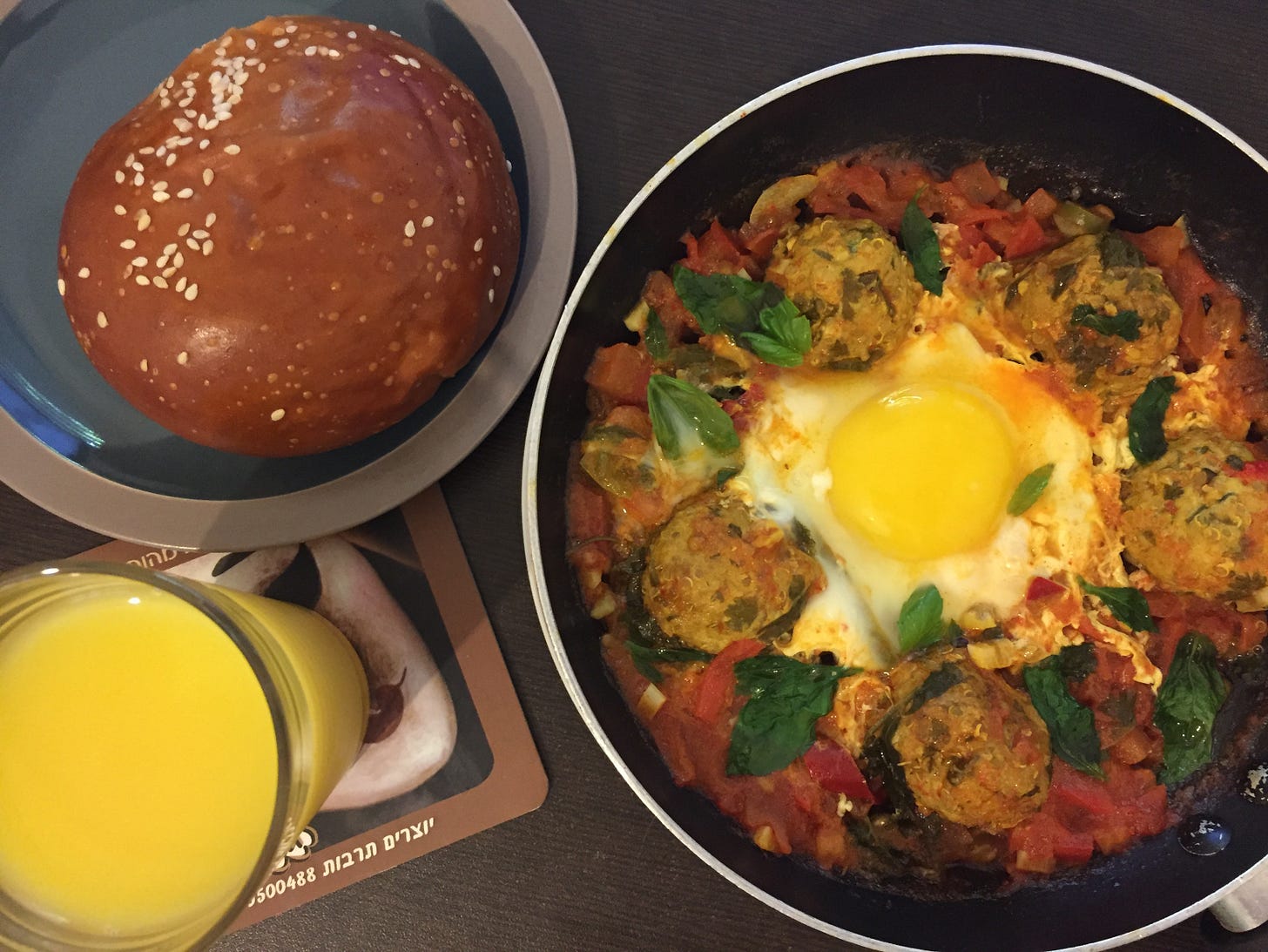When One-Third of US Tomatoes Are Imported, What Does It Mean for Shakshuka?
A Story Unfolding Across Timelines.
Current Time.
Recap
Have you also been diagnosed with Foodie Disorder?
One symptom of Foodie Disorder is enjoying looking at photos or videos of food, especially on Instagram. If you find it difficult to take your eyes off pictures of delicious food, you could be one of us.
For those reading my stories for the first time, I have a Foodie Disorder. It is not a harmful disorder; on the contrary, it is beneficial and productive.
Foodie Disorder is the irresistible drive to learn about food and experience it as more than just a source of energy but as an art, a science, and a delicious journey. People with this condition cook, dine, and daydream about meals with passion and purpose. They explore ingredients and the history of the produce they eat.
This manifests as a curiosity to read about what I eat, where it grows, and its journey from the growers to my plate. I also have an irresistible need to cook, a love for eating out, an endless curiosity to explore new flavors from different cultures and cuisines and an obsession with taking pictures of everything I eat and posting them on Instagram and Facebook stories. Yes, I document everything I eat daily, so follow me to see live updates of what I eat.
In my journey to infinity, I explore the cultural signature dishes of various Jewish ethnicities, their history and memories, and how they connect us as Israelis today. The current memory lane we are walking on is the Shakshuka. This is the fourth story in this installment, so fasten your seatbelt and enjoy the ride.
What is Shakshuka?
Shakshuka is a North African dish of eggs in a sauce of tomatoes, olive oil, peppers, onions, and garlic. It is spiced with cumin, paprika, and cayenne pepper, and sometimes I add a pinch of turmeric. Shakshuka spread from North Africa to the Middle East and became a popular, easy-to-make dish. It is a perfect choice for breakfast, lunch, or dinner and has become one of Israel’s signature dishes.
The fusion of Israeli cuisine and innovative chefs has developed various versions of Shakshuka, extending its versatility to include alternatives to tomatoes. Spinach, mushrooms, or zucchini became popular, and adaptations for different dietary needs, such as vegan Shakshuka for those who do not eat eggs or meat-based Shakshuka with merguez sausage, offer creative solutions to diners.
In my case, creativity with Shakshuka has developed from the availability of products in the market and whether I could afford to buy them. After all, that is the fundamental essence of wealth.
Special Versions of Tomatoes
As much as I love tomatoes, the variety of tomatoes has a price. Any variety other than the standard kind costs more, usually much more than the traditional cultivar tomato. Growing up, we ate the classic kind because that was what was available. My parents inherited their habits from their parents' grocery shopping tradition, which developed out of necessity, efficiency, and poverty before they arrived in Israel and during the first years following Israel's establishment.
But the price also played a role. Grape tomatoes, colorful cherry tomatoes, or any other special kind available only in the big grocery stores in the suburbs usually cost much more than classic ones.
In Israel, tomatoes are essential and critical for consumers. As a teenager, I remember seeing news reports about tomato prices when they drastically increased or when demands to import tomatoes put local growers at risk. I did not understand the complete meaning of these reports and their implications for the economy back then, but I remember my parents and grandparents' worried faces.
Tomatoes are deeply rooted in Israeli cuisine and essential to many dishes. When their price, availability, or quality is affected, they immediately make it to the news. However, this does not happen with every fruit or vegetable facing similar issues.
Today, unique tomato varieties are more available and much more affordable than in the 1980s or 90s, but they are still pricey compared to the traditional kind. For me, feeling rich is the ability to buy all types of tomatoes without worrying about their price. Making Shakshuka with various colorful tomatoes is a celebration for my eyes and a burst of flavors for my palate. In a way, shakshuka has a unique taste when making it with colorful tomatoes.
Creativity in Cooking
My creativity with Shakshuka has developed from the availability of products in my refrigerator or when I needed to solve a problem with its taste. Spinach, mangold, and mushrooms emerged from the availability of these ingredients in the local markets and, therefore, in my shopping cart.
Combining tomatoes, mangold, spinach, and various kinds of cheese, such as mozzarella, blue cheese, or parmesan, added new depth to the dish. When I cook, I feel like an artist who creates a masterpiece. Like a painter who picks up colors and starts painting, I select ingredients, spices, and herbs and combine them first in my mind and then in the pan. I can connect flavors in my mind and imagine how they work together.
This ability to connect flavors in my mind is not limited to when I cook. I can also do it in restaurants when reading a menu with new dishes I am not familiar with. Just by reading the list of ingredients combining the dish, I can tell whether I will like the combination or if it makes me curious to try it.
If you follow my daily documentation of what I eat on Instagram and Facebook stories, you may have noticed that I have recently added shrimp to various dishes. Well, that is the result of sales at Target. Yes, I love sales! My creativity reached new levels when I added shrimp to the Shakshuka. Yes, I know, it is not kosher, but I love shrimp, and combining shakshuka, shrimp, and fresh bread tastes like heaven.
A few weeks ago, Target sold almost all the seafood refrigerators for nearly half the price. As a bargain enthusiast, I could not resist these sale prices, especially since they cost less than meat. So, I ended up buying seafood instead of meat. Writing this made me smile because it reminded me of my father, so I must share why.
When talking about groceries and food prices, my dad always says that he eats “sales,” meaning he buys what is on sale, and that is what we eat. This definitely shows that I am my father’s daughter because I started doing the same.
More Shakshuka Stories
Stay tuned for the final episode, where I’ll share more memories of Shakshuka. Until next time, I’ve included some more photos of Shakshukas I made.
If you can’t wait and want to see them now, Google “Liat Portal Foodie Disorder” and switch to the images view to explore the different types of Shakshuka I’ve made.
See you soon, and bon appétit!
Please fasten your seatbelts and subscribe.
Unlock my potential to write the next great chapter in the most extraordinary story ever told. Your support would make a big difference in taking this journey to the next level.
Follow me on My Journey to Infinity to find out. It will be more beautiful than you could ever imagine.
Liat
In this journey, I weave together episodes from my life with the rich tapestry of Israeli culture through music, food, arts, entrepreneurship, and more. I write over the weekends and evenings and publish these episodes as they unfold, almost like a live performance.
Each episode is part of a set focused on a specific topic, though sometimes I release standalone episodes. A set is released over several days to make it easier for you to read during your busy workday. If one episode catches your attention, make sure to read the entire set to get the whole picture. Although these episodes are released in sets, you can read the entire newsletter from the beginning, as it flows smoothly, like music to your ears - or, in this case, your eyes.



